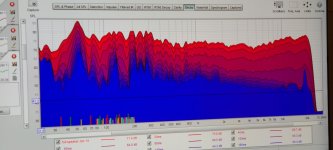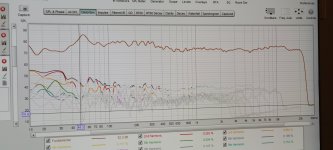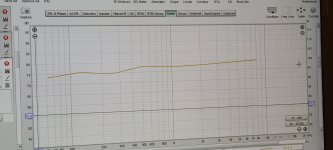So I'm looking for a pair of Tri-ampable speakers to use with my DEQX
and it got me thinking. Are there any benefits to using the builtin crossovers
for each driver and just using the deqx for minimal correction/timing vs connecting it
straight to each driver?
I imagine doing more in the analog domain might sound better because well...its analog.
But I'm interested to know if anyone can chime in on this.
Regards,
Eli
and it got me thinking. Are there any benefits to using the builtin crossovers
for each driver and just using the deqx for minimal correction/timing vs connecting it
straight to each driver?
I imagine doing more in the analog domain might sound better because well...its analog.
But I'm interested to know if anyone can chime in on this.
Regards,
Eli
I imagine doing more in the analog domain might sound better because well...its analog.
While avoiding subjective bias, there are multiple benefits to active amplification, prime among which are damping and the 3dB gain you get back from dumping the loss in inductors introduced to counter baffle step loss.
You still have to correct for this loss in your XO, but increasing the gain brings back the lost 'sensitivity'. The only possible benefit to keeping the original crossover is its possible compensation for phase, impedance and frequency response with (hopefully) just a few components.
One possible approach is to use passive tweeter-mid crossover and active for XO between mid and woofer. This allows you, in a sense, to have your cake and eat it too.
Takes 3 times the number of power amps if using digital crossovers. I would probably opt for one really good stereo amplifier rather than 3 times the number of lesser amps, if that were to be the trade off to stay within budget. As far as doing crossovers in DSP verses passive analog, DSP should win. As with power amps, I would rather have one really good stereo dac than some lesser 6-channel solution. I would also make sure to only pass through one dac one single time. Once digital, stay digital until that one dac pass and then stay analog from there on out. If using phono only, I would probably opt to stay analog all the way. My opinions only, of course.
it would be preferable to use the amplifier connected to the drivers directly and do the
processing digitally,but be careful as power on thuds could damage the tweeters
Many still use large film capacitors in series with mid and hf drivers for protection, when using DSP.
Hi, Eli!
There are a couple of questions including, but not limited, by follow:
1. What a planned budget for a such a system.
2. Your possibilities to cross-over and align bands of your system.
3. Your possibilities to build a fully-actively driven system inside an a one-time-domain masterclock.
4. Your possibilities to your system to be fully digital XO'ed, room'corrected and loudness'ed.
Too much questions to be realised inside the one of the even modern devices
There are a couple of questions including, but not limited, by follow:
1. What a planned budget for a such a system.
2. Your possibilities to cross-over and align bands of your system.
3. Your possibilities to build a fully-actively driven system inside an a one-time-domain masterclock.
4. Your possibilities to your system to be fully digital XO'ed, room'corrected and loudness'ed.
Too much questions to be realised inside the one of the even modern devices
Hi, Eli!
There are a couple of questions including, but not limited, by follow:
1. What a planned budget for a such a system.
2. Your possibilities to cross-over and align bands of your system.
3. Your possibilities to build a fully-actively driven system inside an a one-time-domain masterclock.
4. Your possibilities to your system to be fully digital XO'ed, room'corrected and loudness'ed.
Too much questions to be realised inside the one of the even modern devices
Hi! Yes it is alot to think about, but isnt that what makes this hobby fun?
Playing around alot with the DEQX made me realize, or at least it seems that digital XO can
have its own 'sound'. I realize this is nearly impossible to quantify so Ill leave that there.
But also messing around with the timing showed me the affects on the polars and phase. So my question
really is with regards to whether its better to just judiciously use DSP on a well built crossover.
BUT in this case I want to use a triampable speaker. This way each individual driver can be shaped
very slightly with DSP and the timing adjusted without affecting the other drivers.
Something that would not be possible with a bi-ampable 3 or 4way for example. Im thinking
about getting the ATC SCM40. I know about the issues with the polars but I think some of that can
be cleaned up with DSP, and I really am interested in that beautifule 3" dome mid
Regarding a digital cross-over having a 'sound,' of course it can. It could be linear phase, it could have some other phase response, it could be more or less sharp in its roll-off, etc. Some people may notice such things more than others. Also, DEQX may only allow for limited control of what kind of filters can be implemented.
The option I have taken with 3 way speakers is to use an active crossover, bass to mid, and passive mid to HF. This reduces the equipment/wiring overhead/cost. A stereo amp per speaker is then sufficient. The size of the passive crossover is reduced somewhat, not having to handle bass. After a successful implementation, I am not sure that a full 3 way active is a significant advantage.
Almost any speaker is tri-ampable if you choose to remove the passive crossover and duplicate ( or improve ) on the characteristics of the original. You can to some extent have your analog cake and eat it too if you use an analog electronic crossover like the venerable BSS FDS366 with it's custom configurable cards. Most digital crossovers will perform all of the functions of the DEQ and some like the Lake, BSS 366 or XTAs will do it better. It will simply require a fair amount of measuring and experimenting to equal let alone surpass the efforts of all the engineering skill and resources that went into the originals but you'll also be bringing much more powerful tools to bear than even JBL or Tannoy had back when some classic designs were established.
Connecting woofers directly to the very low impedance output of a power amp will usually result in much better damping and control of the voice coil. Mid and high frequency amps rarely need to be anything near the power capacity of the low freq amp, usually less than half the power for mids and a quarter power for highs. I'd suggest picking speakers that fit your size and output expectations and work back from there in re-inventing them as trivia-amped.
Connecting woofers directly to the very low impedance output of a power amp will usually result in much better damping and control of the voice coil. Mid and high frequency amps rarely need to be anything near the power capacity of the low freq amp, usually less than half the power for mids and a quarter power for highs. I'd suggest picking speakers that fit your size and output expectations and work back from there in re-inventing them as trivia-amped.
So I'm looking for a pair of Tri-ampable speakers to use with my ...
Eli
UPDATE:
So the ATC SCm40's arrived the other day and Ive had a chance to play around with them. Very impressed
with these speakers. ATC is the real deal. I'm not an expert of course in audio physics so I can only give my
anecdotal impressions.
Im so glad I trusted my intuition
After playing around with the DEQX for a year Ive discovered its strengths and limitations. Its strengths
are the phase correction and step response. Its mostly when you apply the active crossovers that the life leaves the speakers. I dont know why.
So my plan was to use the passive crossovers inside the SCM40's and only use DEQX for phase, timing and step response. All I can say is W-O-W. What a difference between that and running these passive.
I'm using an exactpower power conditioner/wave correction, a 6 channel EDGE hometheater amplifier
which has 6 500asp Icepower modules inside.
So these speakers lke ALOT of juice.
Also I set the DEQX jumpers to their lowest signal power -8db for least amount of distortion .
So the ATC SCm40's arrived the other day and Ive had a chance to play around with them. Very impressed
with these speakers. ATC is the real deal. I'm not an expert of course in audio physics so I can only give my
anecdotal impressions.
Im so glad I trusted my intuition
After playing around with the DEQX for a year Ive discovered its strengths and limitations. Its strengths
are the phase correction and step response. Its mostly when you apply the active crossovers that the life leaves the speakers. I dont know why.
So my plan was to use the passive crossovers inside the SCM40's and only use DEQX for phase, timing and step response. All I can say is W-O-W. What a difference between that and running these passive.
I'm using an exactpower power conditioner/wave correction, a 6 channel EDGE hometheater amplifier
which has 6 500asp Icepower modules inside.
So these speakers lke ALOT of juice.
Also I set the DEQX jumpers to their lowest signal power -8db for least amount of distortion .
Last edited:
Here's the frequency response (in room) before correction. Theres some smoothing applied.
Strangely the stock speaker has about -2 db on the woofer and +3 db on the tweeter.
So I corrected for amplitude and what a difference just that made! No need for subs IMO.
Other than the volume, ATC did an excellent job with the crossovers.
Strangely the stock speaker has about -2 db on the woofer and +3 db on the tweeter.
So I corrected for amplitude and what a difference just that made! No need for subs IMO.
Other than the volume, ATC did an excellent job with the crossovers.
Attachments
Last edited:
Strangely the stock speaker has about -2 db on the woofer and +3 db on the tweeter.
Hey, ATC engineers knows their job and lower low freqs for loering in-room resonances you just captured in attached photo.
Your room have not enough dampening and longly resonates at this freqs. Which can disturb sound picture mastered by audio-engineer.
So I corrected for amplitude and what a difference just that made! No need for subs IMO.
Be warned.
Running at rised low freqs straightly asks for massive low freq speaker diaphragm moving. First of - this increases distortion while second of - you're very easy run out of safe moving margin. Keep your coil safe, as speaks.
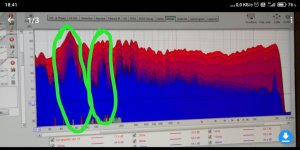
Be warned.
Running at rised low freqs straightly asks for massive low freq speaker diaphragm moving. First of - this increases distortion while second of - you're very easy run out of safe moving margin. Keep your coil safe, as speaks. View attachment 911635
Thanks, yeah these woofers I believe are rated for around 110+db and I only listen at around 85db
so I'm not too worried about it!!
- Status
- This old topic is closed. If you want to reopen this topic, contact a moderator using the "Report Post" button.
- Home
- Source & Line
- Digital Line Level
- Theoretical question about 3 way active speakers
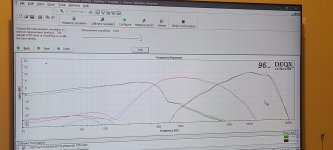
![222 [2].jpg](/community/data/attachments/832/832913-238f062b345ff4ad4f59939f6f901d84.jpg)
